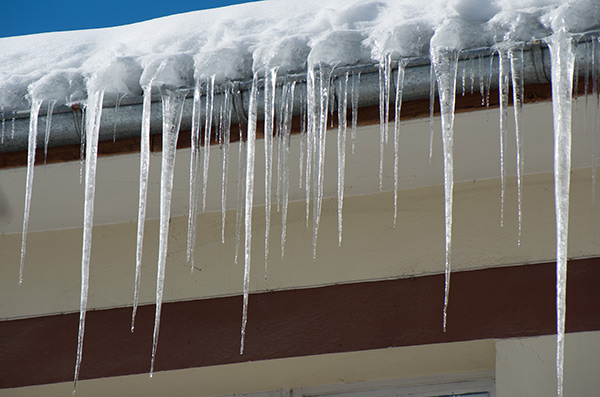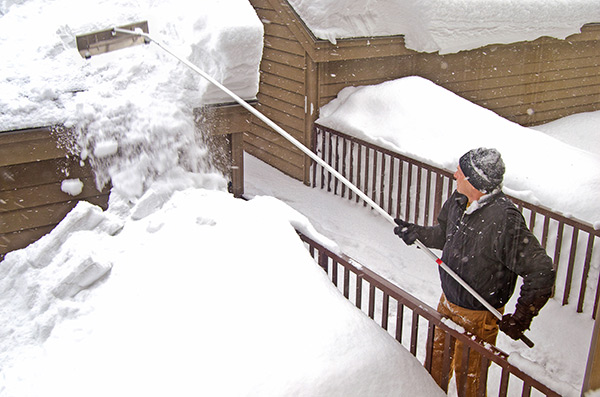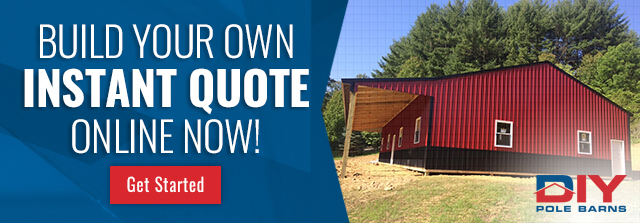If you live in a temperate climate that’s prone to snow in the winter, you know first-hand how heavy it can be. That’s why any building constructed in regions that expect snow are engineered to support the estimated amount of snow for the area. Your pole barn snow load will vary based on the region you live in and the snowfall it can expect.
As the temperatures drop, don’t forget to read our guide on pole barn insulation!
What is Snow Load?
The term snow load is a specific term that refers to one cubic foot of snow – which typically weighs about 10 to 15 pounds. Compacted snow can weigh up to 20 pounds per cubic foot. Engineers use snow loads to help estimate the overall support a structure’s roof will need to withstand a region’s snowfall.
Every region’s snow load is different. Your local building codes will include the details. Keep in mind that snow load estimates can change! The support required to pass code today may be different from the last time you built a structure like a pole barn.
DIY Pole Barns Makes It Easy to Plan Your Pole Barn for Any Snow Load!
Safety is nothing to take lightly. That’s why DIY Pole Barns calculates your pole barn’s snow load support automatically when you start planning your pole barn with our instant quote tool. You don’t have to do any math – we take care of it for you. This saves you time looking up your local codes and snow fall, while also making sure you know your pole barn is safe when snowflakes begin to coat your roof.
How Are Pole Barns Designed to Handle Snow Load?
Support for temporary loads like snow on your pole barn’s roof travels through a few parts of the design. The most essential parts for support are the purlins, trusses, truss carriers, posts, and footers.
When snow loads are excessive, such as areas of Maine or Minnesota, the structural members need to be designed to carry them. They are the primary load bearers for your structure. In these regions, your pole barn roof needs to support snow loads of 60 to 85 or even higher. While you may be able to support most snow loads with trusses spaced four feet apart and dimensional lumber for truss carriers, these areas may require you to use truss spacing that’s only two feet apart and engineered lumber truss carriers.
Risks of Snow on Your Roof
Don’t ignore accumulating piles of snow on your roof. In small quantities, you don’t have much to worry about, but as the pile continues to grow, serious problems can occur:
Roof Collapse – A properly constructed pole barn roof is unlikely to collapse under typical loads of snow. However, in extreme circumstances ice and sleet can accumulate with the snow to create much heavier snow loads. If left on your roof, they can strain the supports and eventually lead to collapse.

Ice Dams – When snow partially melts on a roof, it flows down towards the gutters where it may get trapped to freeze again. These dams grow larger and eventually begin to drip in through the roof. In some cases, they can break free and rip off gutters or shingles.
Roof Avalanches – On a pitched roof, snow can gather in such large volumes that it begins to fall due to its own weight. These avalanches can be unpredictable and happen quickly. In addition to damaging gutters, they can harm people or landscaping on the ground where the snow falls.
Snow Bars Can Help Protect You from Snow
Snow on your roof can be a dangerous risk. But that doesn’t mean it’s always a good thing when it comes off. Roof avalanches are a potential in any area where snowfall has accumulated on a pitched roof.
When snow suddenly falls off in large volumes, these avalanches can do major damage. There are risks to your building, such as gutters, skylights or vents. Additionally, people, pets or landscaping near the building can also be harmed.
Snow bars are one solution to help reduce the risk of roof avalanches. They fasten to your metal roof and prevent snow piles from rapidly falling off. If you live in a high snowfall region, consider adding snow bars to your pole barn design. They’re one of the many unique features available in DIY Pole Barn’s custom kits.
How to Safely Remove Snow from a Roof
As the winter season progresses, your pole barn’s roof may accumulate more and more snow. If rain, sleet or ice are mixed in, the weight can become immense. You can help reduce the strain on your roof by removing snow before it packs too heavily.
Roof snow removal is no easy task. Especially with a steeped roof of a pole barn. The best way for you to remove snow from your roof is with a plastic roof rake. Many of them come with extensions dozens of feet long, so you can reach the roof without needing a ladder.
Don’t remove all the snow. You only need to keep the pile from accumulating too much. If you try to scrape every inch of snow off, you could damage the roof.

If you don’t have a roof rake, it’s recommended to contact a professional. Using a ladder is already dangerous – add in the potential for avalanching snow and the risk increases exponentially.
Build a Pole Barn Designed for Snowy Regions – Get an Instant Quote Online!
If you’re ready to build your pole barn, lock in a quote with DIY Pole Barns using our Instant Quote tool! Have questions? Call our knowledgeable staff at (937) 547-9100.
Connect with us on social media!




